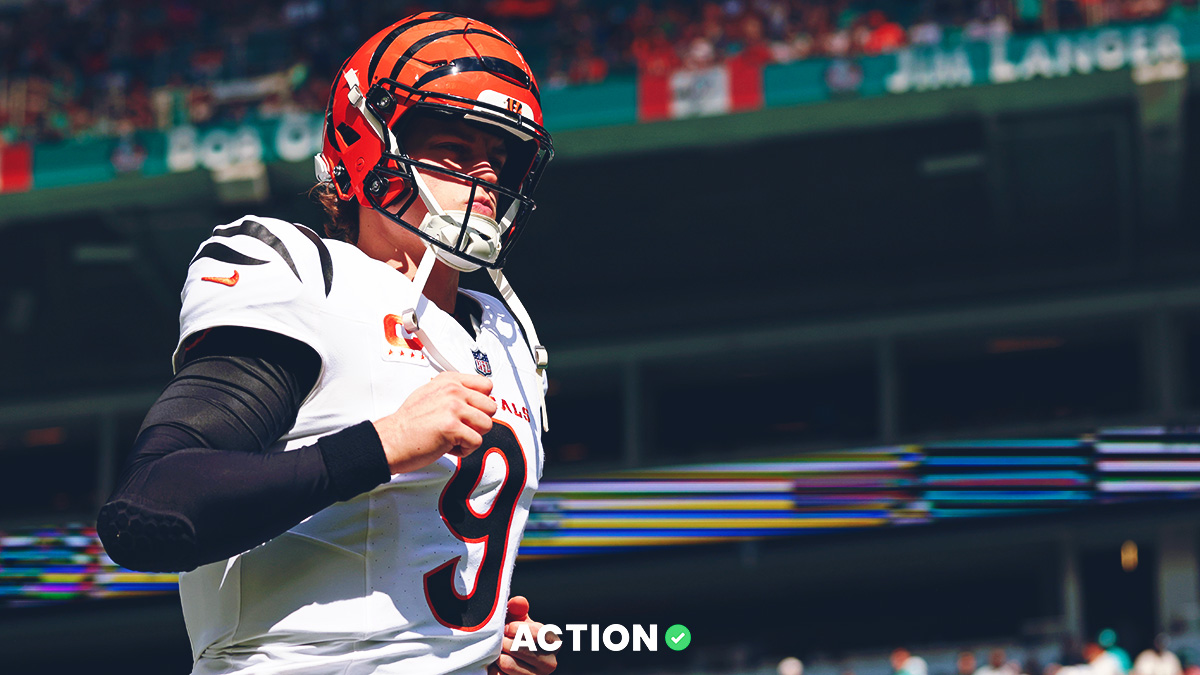For years now, the Tennessee Titans have been the NFL's foremost "had no business" team.
It felt like they had no business going 9-7 in 2016, and then again in 2017 under former head coach Mike Mularkey. They had no business making the playoffs in 2017, and they definitely had no business winning a playoff game.
Team owner Amy Strunk knew they had no business going 9-7 in those back-to-back seasons, because she fired Mularkey despite that playoff win.
Mike Vrabel took over in 2018, and after maintaining the status quo with yet another 9-7 season, he ratcheted up the "had no business" level to uncharted territory in 2019: After opening the season 2-4 while averaging 16.7 points per game, the Titans had no business evolving into an offensive powerhouse, ending the Tom Brady era in New England, and then knocking out the league MVP and the best team in the Divisional Round — and they sure had no business doing it with Ryan Tannehill.
So what’s the deal with this team? Was their Week 7 loss to Pittsburgh that ended their five-game unbeaten streak to start the season merely long overdue regression, or is this something more to this team’s success?
Let’s take a look.
A Case Study of the Titans' Luck vs. Skill
First, what makes an NFL team lucky?
Well, teams can benefit from luck in a few ways:
- Winning a high percentage of one-score games: We should expect teams to win at a .500 rate over time.
- Turnover luck: Such as recovering an outlying number of your own fumbles.
- Opponent kicking luck: A team generally can’t control how good the opponent is at making field goals and extra points, which can swing games.
Well, the Titans went 4-1 in one-score games last season and are 4-1 in one-score games to start this one.
Their turnover luck has been relatively even — they've lost only 40% of their fumbles since last season and have recovered 42% of opponents' fumbles.
But where it starts to get interesting is when we look at kicking luck: The league-average extra point and field goal rates are 85% and 94%, respectively, and the Titans' 2019 opponents connected on only 78% of their field goals while missing five extra points, just an 85% average. But whatever benefit the Titans could have gotten from that was canceled out by their own 44% field goal rate.
Unless you’ve been under a rock, you know that the Titans’ kicking woes have continued this season: When Stephen Gostkowski missed the potential game-tying field goal against the Steelers in Week 7 and cemented the Titans' first loss of 2020, he dropped to 10-of-16 on the season.
#Steelers squeak by the #Titans on a missed field goal by Stephen Gostkowski!
Steelers stay undefeated. pic.twitter.com/6BGTfuTdIO
— Lawrence Owen NFL (@Colts_Law) October 25, 2020
In many ways, that game was a microcosm of the Titans when it comes to luck vs. skill: They had no business being in that game after falling behind 24-7 in the first half … but they also had no business losing a game in which they were +3 in turnover differential.
It's almost as if the Titans miss kicks by design — and it brings us to the heart of their confounding success: They have won close games and put up loads of points because they're converting in the red zone at a rate that they have no business converting at: Since the start of last season, the Titans have converted 54-of-69 red zone trips (78.3%). This season, they've converted 20-of-25 (80.0%).
The unsustainable nature of efficiency in red-zone conversion has been well documented — and the year-to-year correlation of red-zone touchdown rate is only 0.10. But do you know which team's red-zone conversion efficiency has carried over consistently in the past? The team Vrabel spent much of his playing days with: The New England Patriots.
Here were the Pats' finishes in red-zone efficiency for eight straight seasons between 2010 and 2017: Sixth, fourth, third, eighth, fifth, fourth, 10th and third. And when they finally did fall outside the top-10, they dropped to only 12th in 2018, then fall the way down to 26th in 2019.
It's easy to conclude that perhaps Vrabel — despite having never coached under Bill Belichick — brought over some of that intangible Patriots magic. But remember that Vrabel is a defensive guy — he certainly gets a lot of credit for the Titans' success, but even with last season's fast finish, Vrabel is yet to outdo Mularkey's patented 9-7 finishes.

And Vrabel's record against the spread (ATS) — which is a great way to judge a head coach considering point differential is more predictive of future win-loss record than prior wins and losses — is a mediocre 18-19.
I do believe Vrabel is greater than that ATS record indicates — his gameplans are generally excellent, especially the one against the Ravens in the 2019 playoffs — but the Titans' true edge may come instead from offensive coordinator Arthur Smith.
Smith had been with the team since 2011 in various roles, but took over as offensive coordinator in 2019, which coincided with Tennessee's first top-10 finish in points since 2003. Tannehill went from a passer who averaged 7.0 yards per attempt and 5.56 adjusted net yards per attempt in Miami to 8.9 YPA and 8.44 ANYA in Tennessee.
Much is made of Smith's use of playaction, which was a revelation for Tannehill, but where Smith has truly found the cheat code is in the deep red-zone: Inside the 10.
Rewatch of all of Tennessee's touchdowns from 2019, and what stands out the most is how easy some of them are — Smith is not simply relying on Derrick Henry to pound it in.
Tannehill has thrown for multiple touchdown in all but two of his starts as a Titan. He's also thrown a touchdown on 61.7% of passes inside the 10, which is in another stratosphere from the 36.6% league average over that span. And that's largely a result of Smith's creativity — he's mastered the art of the big-man touchdown: Since the start of 2019, the Titans have three touchdown passes caught by offensive linemen, more than many teams have in their entire franchise histories.
Even Henry got in on the action with a passing touchdown last postseason.

So have the Titans been lucky? Yes, but they've also been good — on offense, at least. They won't continue to score at an 80.0% clip from inside the red zone, but they also won't continue to kick field goals at a 53.9% rate.
Henry and A.J. Brown won't keep scoring 80-yards touchdown, but that doesn't change the fact they're two of the most explosive players in the game.
The defense, ravaged by injuries, will likely improve from the one that is 31st in third-down rate and 31st in red-zone rate allowed — Vrabel had this unit allowing the third-fewest points per game in 2018 (18.7) and 12th-fewest in 2019 (20.7). And despite the poor situational defense, they're league-average in points allowed this season with 25.5 at 16th in the NFL.
And despite their outlying success in scoring position, the Titans underlying' offensive metrics check out: They finished fourth in yards per play last season and are tied for fifth at 6.1 this season. Unlike red-zone touchdown rate, offensive yards per play — which has a strong correlation to point differential and, obviously, points scored — stabilizes (i.e. becomes predictive) about five or six games into the season.
So yes, the Titans will regress to the mean, but the mean may be higher than we think.





















































